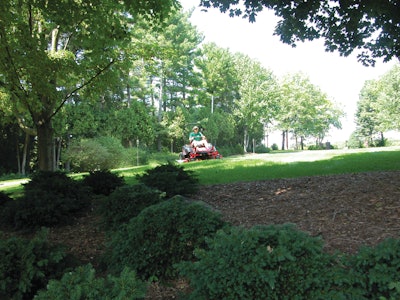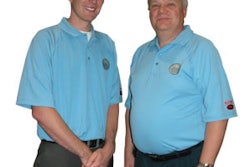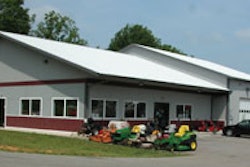
We’ve been known as PRO since the magazine was launched in November 1988. At that time, the industry was on the brink of an explosive transformation. We’ve now changed our name to Green Industry PRO, and the industry is once again on the threshold of its next defining era.
All products and industries go through a life cycle. Most business academics recognize four basic stages: introduction, growth, maturity and decline. The ultimate goal of an industry is to prolong the maturity stage as much as possible. The ultimate goal of a given company is to make sure it is poised to prevail when its industry finally reaches a stage of decline.
The Life Cycle of Business
Here’s what the life cycle model looks like when applied to our industry.
Introduction. Amidst the development of suburban America in the 1940s and 50s, “landscaping services” emerged as a serious business. Over the next few decades, as consumers fell more and more in love with the concept of having beautiful, well-maintained lawns, landscapes and gardens, the industry flourished.
Growth. Landscaping continued to flourish throughout much of the 1980s and 90s as housing starts, for the most part, remained strong. Even during stretches where housing and new construction stalled, landscape maintenance services remained in strong demand; beautiful outdoor spaces were now a part of American culture. By the mid-1990s, landscaping services was a major part of the U.S. economy, generating upwards of $35 billion in annual sales and employing nearly half a million people.
Industries in the midst of their growth cycle typically experience several things, including a steady pace of new companies entering the market, and the geographic expansion of stronger companies.
Companies adopt one of two strategies: price low and go for volume, or position their product or service as “high quality, more value”. Some companies struggle to differentiate themselves from others. Sounds like our industry over the past 10 or 15 years.
Maturity. The biggest sign that an industry is reaching a stage of maturity is a much slower rate of growth, perhaps on pace with the overall economy. Even though demand has flattened out, new companies continue to enter the market. Their goal? Steal market share from existing companies. Sounds like our industry over the past few years.
Decline. All industries will eventually reach a state of decline—and that’s not necessarily cause for panic. While sales flatten out and ultimately begin to decline, individual company profits climb as there are fewer competitors in the market, and those companies that are left are strong. These strong companies continue to expand geographically in order to occupy market areas vacated by weaker companies that couldn’t survive, or perhaps didn’t have the will to continue trying.
Growth Now Requires Serious Smarts, Commitment and Professionalism
I am not saying that “landscaping services” as an industry has reached a stage of decline. But I think it is fairly clear that the major growth stage of this industry has already happened, and all indications point to the fact that we are smack dab in the midst of our maturity phase.
Do not freak out! Mature industries still grow—they just have to do so in a more creative, responsible and professional manner. In studying the evolution of the landscaping services industry since its breakthrough more than 60 years ago, it’s clear that growth has been driven by three things: population, housing starts and consumer psyche. This is still the case today, but it’s a different ballgame.
The rate of population growth is slowing dramatically. The population is aging even more dramatically. As difficult as a housing market recovery is to predict these days, one thing is for certain: When new housing and construction do pick up, the emphasis on green building and sustainable maintenance will only increase over the next several years.
With respect to consumer psyche, there is no doubt that Americans still love their outdoor spaces. But again, there is a growing emphasis on eco-friendly, sustainable landscaping. There is also an increased emphasis on “outstanding service at a very reasonable price”. That’s where one of the biggest challenges lies. During an industry’s growth stage, most companies can fare pretty well by offering either outstanding service, or low price. But in a mature industry, companies have to find a way to deliver both.
Reinventing the Industry
Smart industries also find a way to extend their maturity stage as much as possible. They do so by implementing production improvements to drive out inefficiencies and increase profits. Smart industries also find new uses for products, and/or offer “new and improved” products in an effort to revitalize sales and rekindle that passion consumers once had.
This takes us back to PRO’s name change. When our magazine was launched in 1988, the industry was on the brink of a transformation—major growth was coming. We felt it was important to stress the importance of professionalism to the many new contractors who were entering the market month after month.
Today we are calling our magazine Green Industry PRO, because that’s what you are. It is what consumers, given their present day psyche, need to see you as. You are much more than a landscape guy who can cut grass and spray weeds, plant trees or plow snow. You are a professional who expertly and responsibly cares for our precious environment—something Americans learned to cherish more than 60 years ago. You are a Green Industry Professional.


![Doosan Bobcat Wacker Neuson Stack 2ec Js Pb V6e[1]](https://img.greenindustrypros.com/mindful/acbm/workspaces/default/uploads/2025/12/doosan-bobcat-wacker-neuson-stack2ecjspbv6e1.CPyyz8ubHn.png?auto=format%2Ccompress&bg=fff&fill-color=fff&fit=fill&h=100&q=70&w=100)








![Doosan Bobcat Wacker Neuson Stack 2ec Js Pb V6e[1]](https://img.greenindustrypros.com/mindful/acbm/workspaces/default/uploads/2025/12/doosan-bobcat-wacker-neuson-stack2ecjspbv6e1.CPyyz8ubHn.png?ar=16%3A9&auto=format%2Ccompress&bg=fff&fill-color=fff&fit=fill&h=135&q=70&w=240)








